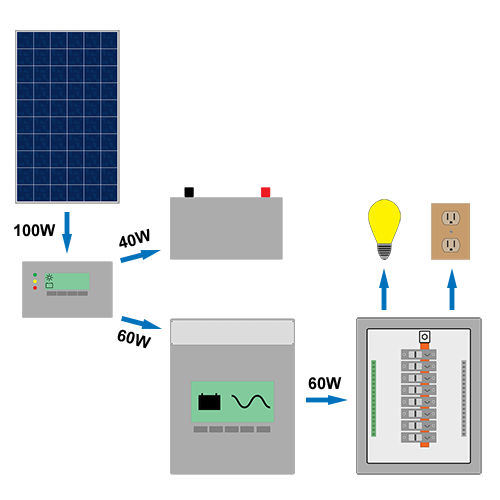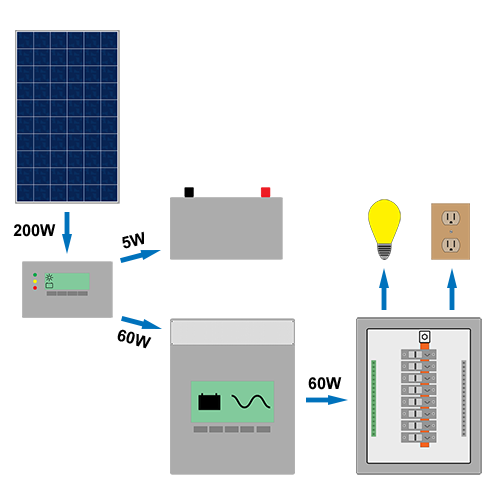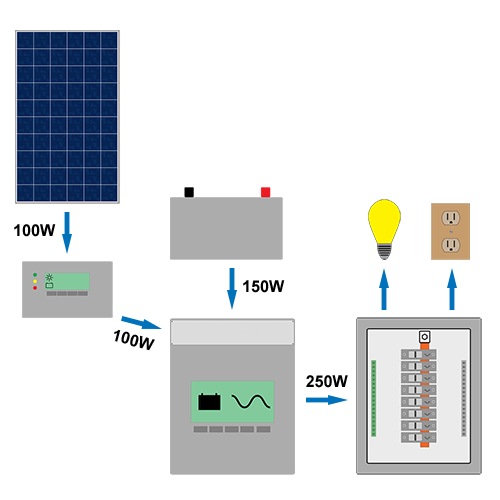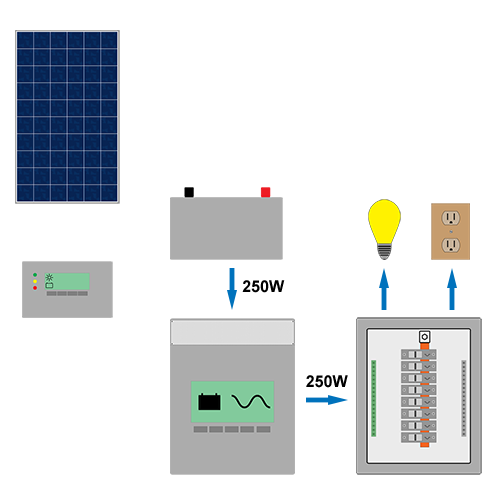Power flow between components
A stand-alone PV system behaves differently depending upon environmental conditions and the demands of system users. The PV source can generate a limited amount of energy based upon its size and the environmental conditions. The energy storage system can only store excess energy that is not consumed by the users or loads, but also has a limited storage capacity based upon its size. The charge controller serves as an intermediary that helps to regulate flows from the PV source to the energy storage system and loads (lighting, appliances). The PV source and the energy storage system will therefore interact in different ways in order to meet the varying power needs of system users. These diagrams do not account for efficiency losses in the system.
Contents
Power from PV source flowing to energy storage and loads
If the PV system is generating power, it will first be used to supply any loads that are on. Any excess energy can be stored in the energy storage system.
PV source is generating excess power
If the PV source is capable of generating power that cannot be used to supply loads or be stored in the energy storage system, then the charge controller will limit the amount of power that it can supply.
PV source is generating insufficient power
If the PV source is incapable of generating sufficient power to supply the loads, then the energy storage system will have to supply the excess power. If the energy storage system does not have sufficient energy stored, then the voltage will drop and the system will stop functioning.
PV source is not generating power for the loads
If the PV source is generating no energy because the sun has set, then the energy storage system will have to meet all power demand. If the energy storage system does not have sufficient energy stored, then the voltage will drop and the system will stop functioning.



